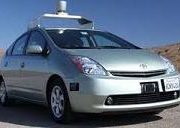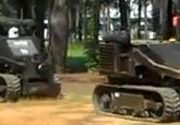Recently, this blog analyzed Defense budgets for unmanned systems (Robots good. People bad). We took the relatively uncontroversial position that whether or not the Defense budget itself grows, the funding for unmanned systems will increase.
ABI Research seems to support our conclusion in a new report that states,”…the global market for military robotics will grow from $5.8 billion in 2010 to more than $8 billion in 2016.” This will happen in spite of “…continuing weak economic conditions that negatively impact spending on defense systems; a dearth of active military conflicts for most of the world, which reduces the need for new defense systems…”
Ironically, while unmanned budgets grow, the robots themselves are becoming smaller. In the cleverly titled “Robots Forced To Carry Out Unspeakable Acts,” Strategy Page.com details the evolution of Unmanned Ground Vehicles. User input from warfighters favors lighter and more compact systems, so the Army is developing and purchasing Small Unmanned Ground Vehicles (SUGV).
Smaller sizes are not just for land vehicles. Aviation Week reports on the popularity of small Unmanned Aerial Systems (UAS) in “U.S. Army Explores New Small UAS.”
The shrinking form factors of unmanned systems confirms a deeply held suspicion of mine; when you or I see the latest unmanned system, we think, “Gee, that’s cool! What does it do?” When a soldier sees it, he thinks, “I sure hope I don’t have to carry that thing. How heavy is it?”




